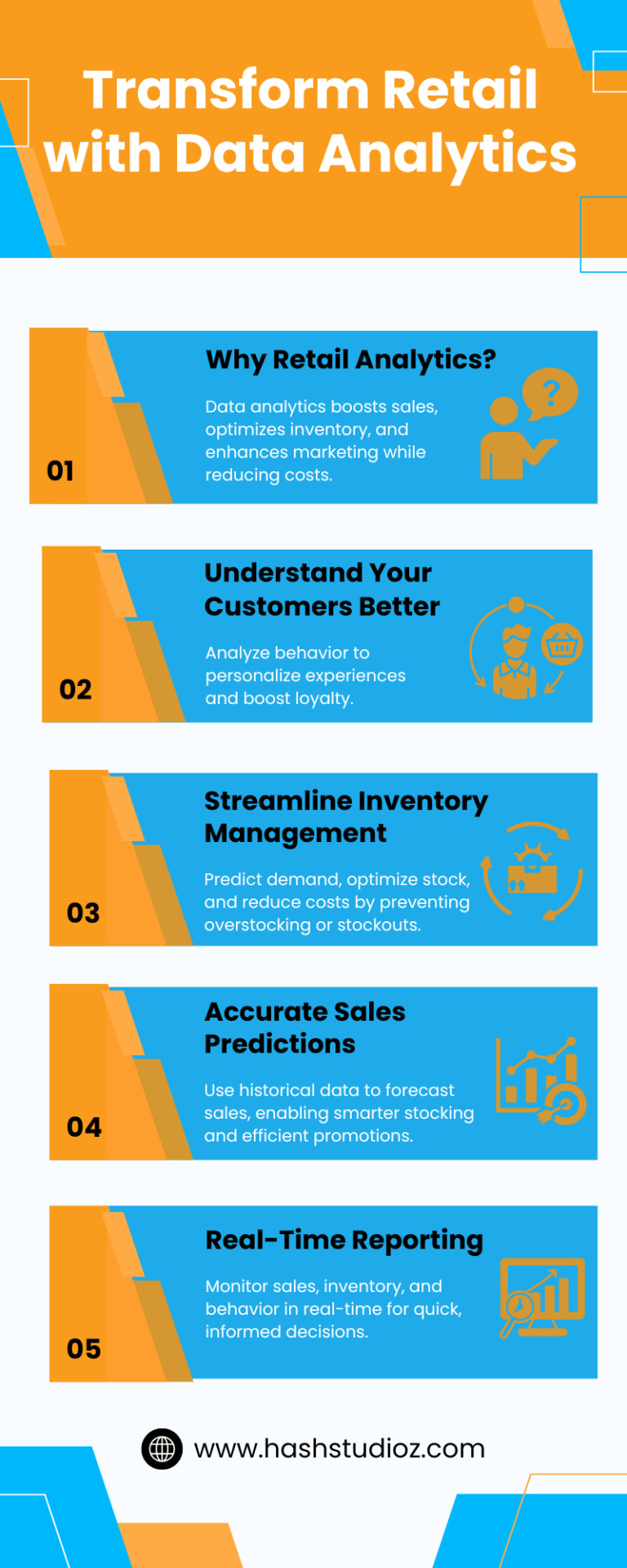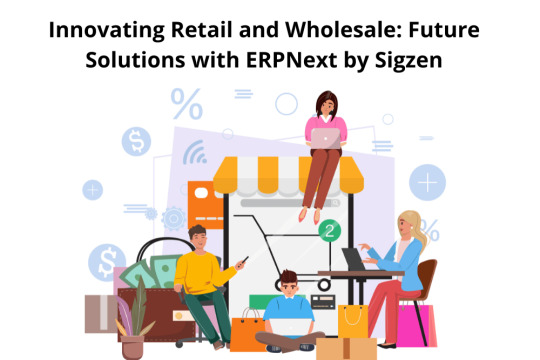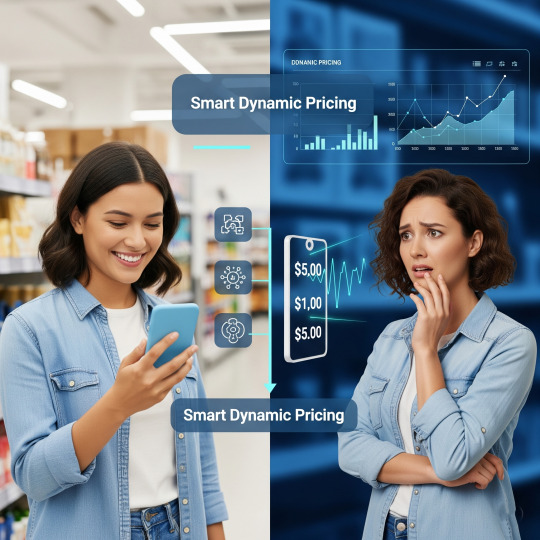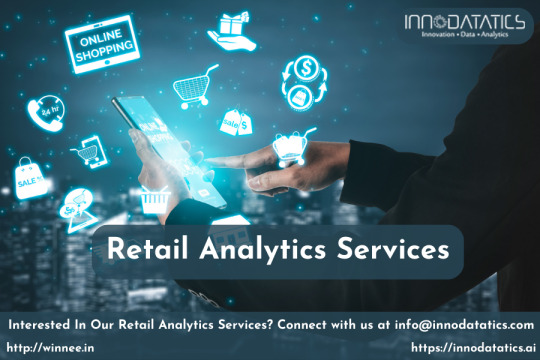#Retail Data Analytics
Explore tagged Tumblr posts
Text
Unlocking Retail Success: How Data & Energy Analytics Are Transforming the Industry

In today’s fast-paced retail landscape, businesses must leverage cutting-edge technology to stay ahead. Two of the most impactful advancements driving transformation are retail data analytics and retail energy analytics. By utilizing these powerful tools, retailers can enhance customer experiences, optimize operations, and significantly reduce costs. In this article, we’ll explore how data and energy analytics are shaping the future of retail.
The Power of Retail Data Analytics
Retail data analytics is the process of collecting, analyzing, and interpreting data to make informed business decisions. From understanding customer behavior to optimizing inventory management, data analytics provides retailers with a competitive edge.
1. Enhancing Customer Experience
By leveraging customer data, retailers can personalize shopping experiences, offering tailored product recommendations and targeted promotions. AI-powered analytics help predict purchasing patterns, ensuring customers receive offers that match their preferences, increasing both sales and satisfaction.
2. Optimizing Inventory Management
With predictive analytics, retailers can anticipate demand fluctuations and maintain optimal stock levels. This minimizes overstocking, reduces waste, and prevents lost sales due to stockouts. Smart inventory management ensures that shelves are stocked with the right products at the right time.
3. Boosting Sales with Data-Driven Marketing
Retailers can analyze customer demographics, purchasing history, and online behavior to craft effective marketing campaigns. By targeting the right audience with personalized promotions, businesses can increase conversion rates and maximize revenue.
4. Enhancing Supply Chain Efficiency
Data analytics streamlines the supply chain by providing real-time insights into logistics and demand forecasting. Retailers can track shipments, identify bottlenecks, and improve delivery times, leading to better customer satisfaction.
The Role of Retail Energy Analytics
Energy consumption is a significant expense for retailers, especially those operating large stores or multiple locations. Retail energy analytics involves tracking and analyzing energy usage to identify cost-saving opportunities and improve sustainability.
1. Reducing Energy Costs
By analyzing energy consumption patterns, retailers can pinpoint inefficiencies and implement strategies to reduce costs. Automated systems can adjust lighting, heating, and cooling based on store occupancy, significantly lowering energy bills.
2. Enhancing Sustainability
With growing concerns about environmental impact, retailers are under pressure to adopt sustainable practices. Energy analytics helps businesses monitor and reduce carbon footprints, making their operations more eco-friendly while appealing to environmentally conscious consumers.
3. Preventing Equipment Failures
Energy analytics can detect anomalies in equipment performance, allowing retailers to perform predictive maintenance. This prevents costly breakdowns, extends the lifespan of critical systems, and ensures smooth operations.
4. Meeting Regulatory Compliance
Retailers must adhere to strict energy regulations. Energy analytics provides detailed reports on consumption, helping businesses comply with government standards and avoid potential penalties.
The Future of Retail Analytics
As technology continues to evolve, retail analytics will become even more sophisticated. AI and machine learning will drive deeper insights, enabling businesses to automate decision-making and enhance operational efficiency. The integration of Internet of Things (IoT) devices will provide real-time monitoring, further improving energy efficiency and customer experiences.
Retailers who embrace data and energy analytics will not only gain a competitive advantage but also build a more sustainable and customer-centric business model. Investing in these analytics solutions today will pave the way for long-term success in the ever-evolving retail landscape.
By harnessing the power of retail data analytics and retail energy analytics, businesses can drive profitability, optimize resources, and stay ahead in an increasingly competitive market. Now is the time to leverage these technologies and unlock the full potential of retail innovation.
0 notes
Text

Enhance your retail business with data analytics services and solutions. Improve customer insights, optimize inventory, and drive smarter marketing strategies with our powerful data-driven tools and expertise.
0 notes
Text
Enhancing Retail Success with Conversational AI Consulting and Footfall Analytics
In the competitive landscape of retail, understanding customer behavior is crucial to staying ahead. Retailers are increasingly turning to advanced technologies like Conversational AI and Footfall Analytics to gain deep insights into their customers' needs and preferences. When combined, these tools not only improve customer engagement but also optimize store operations and drive revenue growth.
The Power of Conversational AI in Retail
Conversational AI refers to the technology that enables machines to interact with humans through natural language, whether via text or voice. In the retail context, this can take the form of chatbots, virtual assistants, or voice-activated systems that provide real-time assistance to customers. From answering product queries to guiding users through the purchasing process, Conversational AI helps retailers deliver personalized, efficient, and consistent customer service.
Moreover, by leveraging machine learning, these systems can continuously improve their responses, leading to more accurate and relevant interactions over time. This not only enhances customer satisfaction but also frees up human staff to focus on more complex tasks that require a personal touch.
Understanding Footfall Analytics
Footfall Analytics involves the collection and analysis of data related to the number of people entering and moving through a physical space, such as a retail store. This data provides valuable insights into customer behavior, including peak shopping times, popular store sections, and the effectiveness of marketing displays.
By understanding these patterns, retailers can make informed decisions about staffing, store layout, inventory management, and promotional strategies. For instance, if Footfall Analytics reveals that certain areas of the store attract more customers, businesses can strategically place high-margin products in those areas to maximize sales.
The Synergy Between Conversational AI and Footfall Analytics
When Conversational AI is integrated with Footfall Analytics, the potential for retail optimization grows exponentially. Here’s how these technologies work together:
Personalized In-Store Experiences: Conversational AI can use Footfall Analytics data to offer personalized recommendations or promotions to customers based on where they are in the store. For example, if a customer frequently visits the electronics section, the AI could suggest the latest gadgets or offer discounts on similar products.
Enhanced Customer Insights: By analyzing conversations alongside footfall data, retailers can gain a more holistic view of customer preferences. This enables them to tailor their offerings and marketing strategies to better meet the needs of their target audience.
Optimized Store Operations: Footfall Analytics helps retailers understand traffic patterns, while Conversational AI can be used to manage customer flow during peak times. For instance, a chatbot could direct customers to less crowded areas of the store or provide information on wait times for assistance.
Data-Driven Decision Making: The integration of these technologies provides retailers with a wealth of data that can inform everything from product placement to staff scheduling. This data-driven approach leads to more efficient operations and better customer experiences.
The Role of Conversational AI Consulting
Implementing Conversational AI and Retail Footfall Analytics requires expertise in both technology and retail strategy. This is where Conversational AI consulting comes into play. Consultants help businesses identify the right AI tools, integrate them with existing systems, and develop strategies for leveraging data insights.
A good Artificial Intelligence and Data Analytics consultant will also ensure that the AI system is continually optimized, adapting to changing customer behaviors and preferences. This ongoing support is essential for maintaining a competitive edge in the fast-paced retail environment.
Conclusion
As retail continues to evolve, the combination of Conversational AI Consulting and Footfall Analytics offers a powerful toolset for businesses looking to enhance customer experiences and optimize operations. By partnering with a knowledgeable Conversational AI consultant, retailers can unlock the full potential of these technologies, driving growth and success in a dynamic marketplace.
#retail analytics companies#retail data analytics#AI-powered footfall#AI solution for retail industry#footfall analysis solutions#Retail footfall analysis#retail video analytics#ai in retail industry#artificial intelligence in retail#retail store analytics#store analytics#ai in retail#retail footfall analytics#Customer Analytics through AI#Crowdsense Retail Analytics Solution#Store Footfall Analytics#ai company#conversational ai#artificial intelligence chatbot#conversational ai companies#consulting firms#conversional ai consulting
0 notes
Text
Retail Analytics Solutions in Hyderabad – Innodatatics
Retail analytics services provide companies with insights from data analysis to improve decision-making, streamline processes, and increase revenue. These services offer a wide range of solutions, including inventory management, sales forecasting, marketing effectiveness evaluation, and consumer behavior analysis. Retail analytics services leverage cutting-edge technology such as artificial intelligence, machine learning, and big data analytics to help firms tailor marketing campaigns, anticipate trends, understand client preferences, and manage supply chains effectively. Ultimately, these insights give retailers a competitive edge in the ever-changing retail market by helping them raise sales, reduce costs, and enhance customer satisfaction.
#Innodatatics Services#Analytics Services in Hyderabad#Retail Data Analytics services#Retail Data Analytics services in Hyderabad#Retail Data Analytics services in Bangalore#Retail Analytics services in Hyderabad#Retail Analytics services#Retail Data Analytics in Hyderabad#Retail analytics solutions#Retail analytics solutions In Hyderabad#Retail analytics solutions In Bangalore#Retail Data Analytics#Retail Data#Retail
0 notes
Text
How to Implement Effective Data Analytics for Retail
The field of data analytics for retail involves the analysis of information to derive valuable insights, helping businesses make informed decisions for optimizing operations and understanding consumer behaviors. This process aids in refining strategies and improving overall performance within the retail industry. Go to Our Blog: https://www.webdataguru.com/what-is-retail-data-analytics/
#retail data analytics#data analytics for retail#data analytics in retail industry#data analytics in retail#retail data analytics solutions
0 notes
Text

Discover the power of Airline IT Solutions to optimize and streamline your airline operations. Our innovative IT solutions are designed to meet the unique challenges of the aviation industry, enabling you to enhance efficiency, reduce costs, and deliver exceptional passenger experiences.
#Airlines IT Solutions#airline bpo#Airline customer Service#airline call center#hotel bpo#logistics bpo services#retail data analytics#ecommerce data analytics#player support#player support services
1 note
·
View note
Text
Out of curiosity, do you ever call your supervisor(s) “Boss” and do you mean it affectionately or not? Because if I call one of my current/former supervisors “Boss” I mean it with the utmost affection.
Edit for clarity (thanks, comments!): I mean something like “You got it, Boss!” not “She is my boss.” Nickname rather than descriptor.
#just pure curiosity from me#I usually say it while imagining a cartoon goon going YOU GOT IT BAWSS#I’ve done it in retail. research. and higher education data analytics#poll#my polls
15 notes
·
View notes
Text
Top 5 DeepSeek AI Features Powering Industry Innovation
Table of Contents1. The Problem: Why Legacy Tools Can’t Keep Up2. What Makes DeepSeek AI Unique?3. 5 Game-Changing DeepSeek AI Features (with Real Stories)3.1 Adaptive Learning Engine3.2 Real-Time Anomaly Detection3.3 Natural Language Reports3.4 Multi-Cloud Sync3.5 Ethical AI Auditor4. How These Features Solve Everyday Challenges5. Step-by-Step: Getting Started with DeepSeek AI6. FAQs: Your…
#affordable AI solutions#AI automation#AI for educators#AI for entrepreneurs#AI for non-techies#AI for small business#AI in manufacturing#AI innovation 2024#AI time management#business growth tools#data-driven decisions#DeepSeek AI Features#ethical AI solutions#healthcare AI tools#no-code AI tools#Predictive Analytics#real-time analytics#remote work AI#retail AI features#startup AI tech
2 notes
·
View notes
Text
2 notes
·
View notes
Text
The Future of Retail & Wholesale: Innovate with ERPNext Solutions by Sigzen
In the dynamic landscape of retail and wholesale, businesses are constantly seeking innovative solutions to stay ahead. Enter ERPNext, a comprehensive enterprise resource planning (ERP) platform designed to revolutionize operations in both retail and wholesale sectors. With its user-friendly interface and powerful features, ERPNext offers a seamless solution for managing inventory, optimizing…

View On WordPress
#Cloud ERP#Customer Experience#Data Analytics#Ecommerce Integration#ERPNext Solutions#Future of Retail#Retail Technology#Retail Trends#Supply Chain Optimization#Wholesale Innovation
2 notes
·
View notes
Text

🚀 Dive into the Future of Supply Chain & Logistics! Discover how advanced supply chain analytics is reshaping the way we manage logistics and supply chains. From predicting trends to optimizing routes, these smart tools are not just about crunching numbers – they're reshaping how we think about and manage the flow of goods. 📦
2 notes
·
View notes
Text
How Dynamic Pricing Impacts Customer Loyalty in Retail
In today’s highly competitive retail environment, pricing isn’t static — it’s dynamic. Retailers are increasingly adopting dynamic pricing strategies to respond to shifting market conditions, customer behavior, and competitor activity.

While this pricing model can drive revenue and operational efficiency, there’s a crucial question retailers must answer:
How does dynamic pricing affect customer loyalty?
Let’s explore the pros and cons of dynamic pricing, its potential impact on long-term customer relationships, and how retail data analytics solutions can ensure the right balance between profitability and trust.
🛒 What is Dynamic Pricing in Retail and How Does It Work?
Dynamic pricing refers to the practice of changing product prices in real time based on a variety of factors such as:
Customer browsing and purchasing behavior.
Market demand and product popularity.
Inventory levels and supply chain disruptions.
Competitor pricing trends.
Seasonal or time-based events (like flash sales).
Retailers use algorithms powered by AI and data analytics to determine the optimal price for each product at a given time. This strategy is commonly seen in e-commerce, travel, and hospitality, but it’s becoming increasingly prevalent in physical retail as well.
📈 Why Retailers Rely on Dynamic Pricing
Retailers adopt dynamic pricing for several compelling reasons:
Maximize profits during high-demand periods.
Clear inventory quickly by reducing prices on slower-moving products.
React to competitors’ pricing in real time.
Offer personalized pricing based on customer segments.
For example, during a festive sale or a product launch, prices might start low to generate buzz and increase once demand spikes. Alternatively, loyal customers may receive exclusive deals that don’t appear to new visitors.
⚠️ The Risk: Is Dynamic Pricing Bad for Customer Loyalty?
This is where things get tricky. While dynamic pricing benefits retailers operationally, it can erode customer trust if not managed carefully. Here are some potential pitfalls:
Perceived Unfairness Customers may feel exploited if they see the same item priced differently within hours or across users. This inconsistency can raise concerns about fairness.
Reduced Brand Trust When pricing seems unpredictable or intentionally inflated, especially during urgent buying moments, customers may question your brand’s integrity.
Cart Abandonment and Frustration If a price changes during checkout or after a product is saved for later, it could lead to abandoned carts and negative reviews.
Weakened Loyalty Over Time If customers consistently feel they’re not getting the best deal, they may stop trusting your pricing strategy and explore alternatives, even if your product quality remains high.
🤝 Can Dynamic Pricing Improve Customer Loyalty?
Yes, when done right, dynamic pricing can enhance loyalty. It’s not the pricing method that damages relationships, but how it’s applied.
Here’s how it can strengthen loyalty:
Offer personalized discounts to frequent buyers.
Give loyal customers early access to price drops.
Reward behavior like referrals or reviews with dynamic offers.
Use AI to ensure fairness, so customers feel pricing is still value-based.
This is where retail data analytics solutions play a pivotal role. They help retailers apply dynamic pricing with intelligence, fairness, and customer-centric strategies.
🔍 Role of Retail Data Analytics Solutions in Dynamic Pricing
To execute dynamic pricing effectively and ethically, businesses rely on retail data analytics solutions that:
Segment customers based on purchase patterns, loyalty scores, and price sensitivity.
Monitor customer reactions to price changes in real time.
Balance pricing rules between profitability and customer satisfaction.
Predict the impact of pricing strategies on long-term customer retention.
These solutions bring clarity and control, helping businesses shift from reactive pricing to predictive, loyalty-focused pricing.
🛠️ Best Practices to Balance Dynamic Pricing and Customer Loyalty
To ensure your pricing strategies support, rather than harm, long-term relationships:
✅ Be Transparent
Let customers know why prices change — based on demand, stock levels, or time-limited offers.
✅ Communicate Clearly
Use messaging like “Today’s Deal” or “Limited-Time Price” to prepare customers for price shifts.
✅ Reward Loyalty
Offer locked-in pricing or guaranteed discounts for loyal customers or subscribers.
✅ Avoid Over-Automation
Always review algorithm decisions for fairness and accuracy.
✅ Test Before You Roll Out
Run A/B tests on pricing changes and monitor key metrics like churn rate, average order value, and customer lifetime value.
🧠 Final Thoughts
Dynamic pricing, when executed with customer experience in mind, can be a powerful lever for both sales growth and customer engagement. But it’s a delicate balance. Go too far, and you risk eroding the very loyalty you’re trying to build.
With the support of retail data analytics solutions, retailers can implement dynamic pricing that’s personalized, predictive, and loyalty-friendly — creating pricing strategies that not only drive conversions but also win trust for the long term.
In the age of smart shopping, smart pricing isn't just about profit — it’s about people.
🔊 Voice Search Optimized FAQs
Can dynamic pricing affect loyal customers negatively❓
Yes, if not applied fairly. Frequent changes or a lack of transparency can reduce trust, especially among repeat buyers.
How can retailers make dynamic pricing fair❓
Use customer data and retail data analytics solutions to set rules and offer personalized, value-driven pricing.
Is dynamic pricing good for small retailers❓
Yes, but it must be carefully managed to avoid alienating customers. Data-driven pricing strategies can work for retailers of all sizes.
Can dynamic pricing be personalized❓
Absolutely. Dynamic pricing becomes more effective when customized based on user behavior, location, and purchase history.
0 notes
Text
Retail Sector Services In Hyderabad – Innodatatics

Retail analytics enables businesses to make better decisions, improve consumer experiences, streamline processes, and increase profitability. In this article, we will examine the main elements, advantages, and trends in the field of retail analytics. By using data to promote business growth, enhance consumer experiences, and streamline operations, retail analytics has revolutionized the retail sector. Retailers who invest in sophisticated analytics solutions will stay at the forefront of this dynamic and ever-changing industry as technology develops. The procedure of obtaining, examining, and interpreting data produced within the retail sector is referred to as retail analytics.
# Retail Store Analytics Services
# Retail Store Analytics Services In Hyderabad
# Retail Store Analytics Services In Bangalore
#Retail analytics
#Retail analytics services
#Retail analytics services in Hyderabad
#Retail analytics services in Bangalore
#Retail analytics services in Innodatatics
#Analytics services in Innodatatics
#Innodatatics Services
#Analytics Services in Hyderabad
# Retail Data Analytics services
# Retail Data Analytics services in Hyderabad
# Retail Data Analytics services in Bangalore
# Retail Analytics services in Hyderabad
# Retail Analytics services
# Retail Data Analytics in Hyderabad
# Retail Data Analytics services in Bangalore
#Retail analytics solutions
#Retail analytics solutions In Hyderabad
#Retail analytics solutions In Bangalore
#Retail Data Analytics
# Retail Data Analytics services
# Retail Data Analytics
# Retail Data
# Retail
#Retail Store Analytics Services#Retail analytics services#Retail analytics services in Hyderabad#Retail analytics services in Bangalore#Retail analytics services in Innodatatics#Analytics services in Innodatatics#Retail Data Analytics services in Bangalore#Retail Data Analytics#Retail Data Retail
0 notes
Text

Subject to availability : High demand Credit Cards Whatsapp only. No Warranty , sales only.
Contact for Business in Delhi and India
Analytics, Mathematics Training.
Business consulting.
English and Education Consulting.
Subject to Availability: High Demand
shankytyagi.github.io
SHAAN TYAGI EDUCATION AND ANALYTICS ENTERPRISES Delhi : WEBSITE :
shankytyagi.github.io
#analytics#advanced analytics#data analytics#google analytics#ai-driven analytics#marketing analytics#hr analytics#business analytics#predictive analytics#retail analytics
0 notes
Text

IGT Solutions offers top-notch logistics BPO services to streamline and optimize your supply chain operations. With a focus on efficiency and cost-effectiveness, IGT's experienced team provides end-to-end logistics support, including order processing, shipment tracking, inventory management, and freight auditing.
#logistics bpo services#ecommerce bpo services#retail data analytics#retail bpo services#ecommerce data analytics#ecommerce automation#retail automation#digital contact centers#digital customer experience#gameplay support#bpm services#airline reservation management#digital content management
1 note
·
View note
Text

How are competitors pricing similar products?
Use 42Signals to track daily trends and category-level shifts with precision.
📊 Visualize pricing insights that help you stay in control
👉 Schedule a demo at https://bit.ly/435XBL1
#analytics#pricing#retail#ecommerce#trending#amazon#flipkart#data#b2b#42signals#digitalshelf#marketing#quickcommerce#retailtech#digital#ecommercestrategy
0 notes